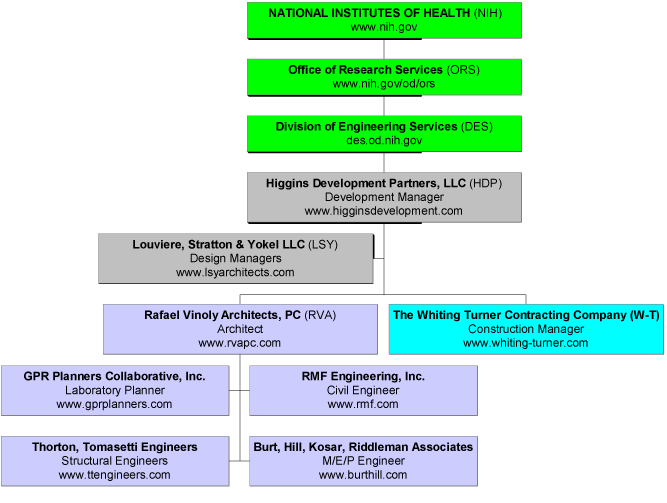
 |
|
||
![]()
Overview
Congressman John E. Porter

|
The Porter Neuroscience Research Center is named to honor former Representative John E. Porter (R-IL), who retired from Congress in January 2001. Congressman Porter served in the House of Representatives for 21 years representing the 10th District of Illinois. He was a strong supporter of biomedical research and the NIH while he served as Chairman of the House Labor/DHHS Appropriations Subcommittee. "The Porter building will accelerate neuroscience discovery by eliminating unnecessary barriers," said Dr. James Battey, Jr., Director of the National Institute on Deafness and Other Communication Disorders. "In his Congressional leadership, Representative Porter exhibited the same type of energetic elimination of unnecessary barriers. The building will remain a symbol of commitment and collegiality in the name of better health for the American people." adds Dr. Battey. |
A New Approach to Neuroscience
The Porter Neuroscience Research Center represents an approach to research unlike any that exists today - multiple Institutes working together, physically and virtually, to improve the pace of neuroscience discovery.
An integrated research approach requires openness, interaction, flexibility, and extensive communication. The NIH recognize that a new workspace design was needed to create such an environment, and that the most effective way to produce that workspace was to create a new building.
The Porter Center will be one of the physical manifestations of this new research approach. While investigators across the campus will contribute to the Center's efforts, approximately 100 principal investigators from the participating Institutes will be working together in the building. The placement of labs will be based on shared scientific interests rather than Institute affiliation. The workspace will be extremely flexible to allow for rapid changes required to suit research needs.
An Inter-Institute Effort
Over 200 laboratories in different Institutes at the NIH conduct research in the basic, translational, and clinical neurosciences through scientific collaboration, pre and postdoctoral training programs, jointly sponsored seminar series and special interest groups. Scientists at NIH contribute to a vital and growing neuroscience research community. Check out the neuroscience website.
Founding Principles
Fact Sheet
| Phase 1 | Phase 2 | Total | |
| Gross Building Area | 267,000 24,800 |
329,000 30,500 |
596,000 sq. feet 55,300 sq. meters |
| Building Floors Laboratory Neighborhoods (pod floors) |
B, G, 1-3 9 |
B, G, 1-4 12 |
21 |
| Principal Investigators Total Lab Research Personnel |
57 443 |
53 657 |
110 1,100 |
| Meters | Feet | ||
| Typical Floor-to-Floor Height Ceiling Height in Labs Ceiling Height at Windows Height: Convent Dr. to Penthouse |
6 3 5.7 37 |
19.7 9.5 18.7 121.4 |
|
Project Team

|